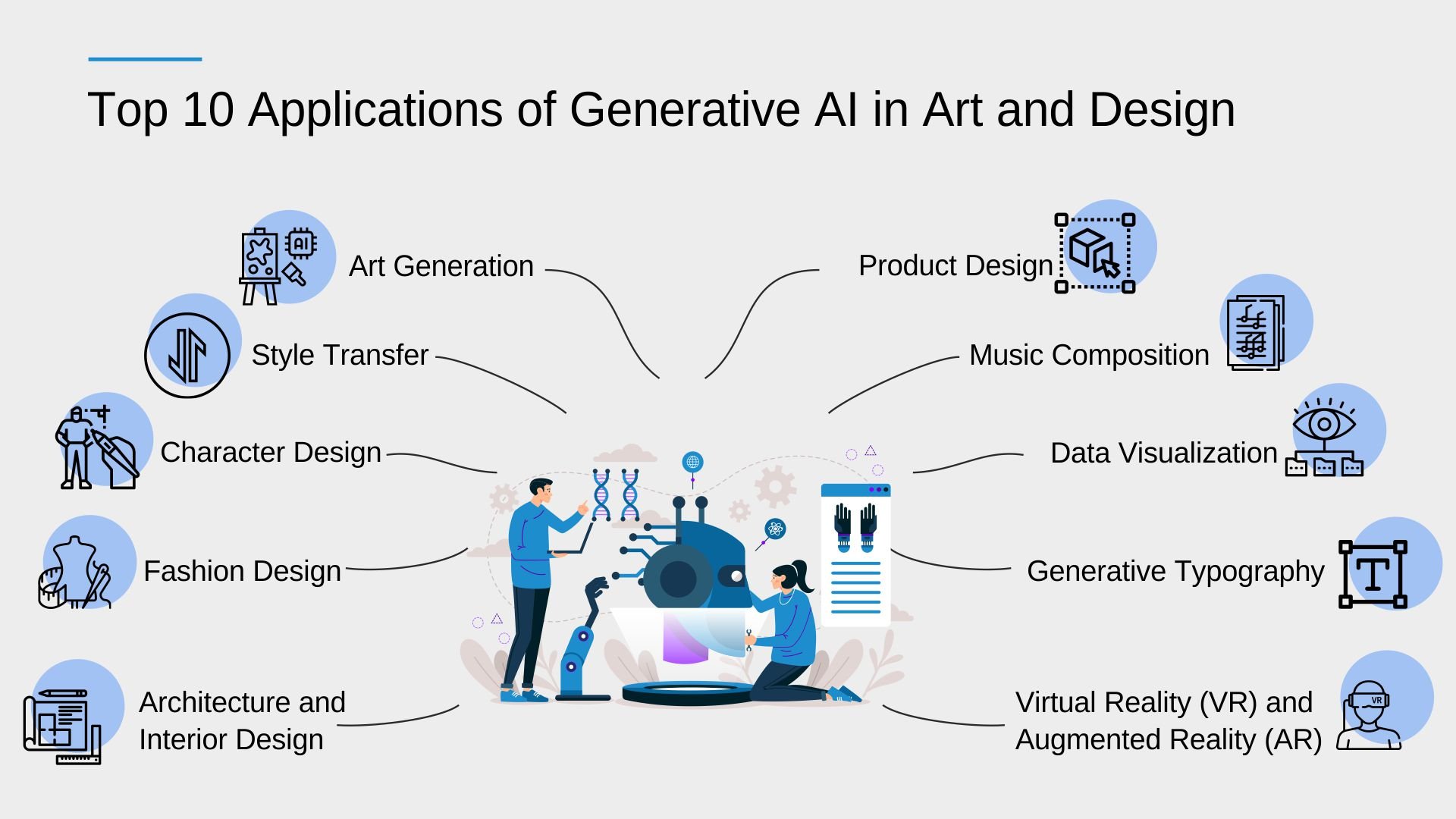Generative Artificial Intelligence (AI) has emerged as a groundbreaking technology that empowers machines to generate unique and imaginative content. By leveraging complex algorithms and advanced machine learning techniques, Generative AI has the ability to produce stunning images, compose music, generate text, and even create virtual worlds. In this blog, we will embark on a journey into the realm of Generative AI, exploring its potential, applications, and the impact it has on various industries. Join us as we delve into the fascinating world of Generative AI and discover the boundless creativity it brings.
Understanding Generative AI
Generative AI is a branch of artificial intelligence that concentrates on producing fresh and unique material by utilizing knowledge acquired from training data to identify patterns and follow predefined rules. It employs deep learning models, such as Generative Adversarial Networks (GANs), Variational Autoencoders (VAEs), and Transformers, to capture the underlying distribution of the training data and generate new instances that resemble the original content. This innovative technology has revolutionized the way we think about creativity and has opened up new possibilities for content creation.
Applications in Art and Design

Generative AI has found a profound impact on the art and design industry. Artists and designers can now leverage these AI-powered tools to explore new artistic styles, generate novel visual concepts, and even create interactive installations. Generative AI algorithms can assist in the creation of unique artworks, aiding artists in the exploration of new ideas and pushing the boundaries of traditional art forms.
Enhancing Content Creation
Generative AI is not limited to visual art alone; it has also made significant strides in music composition and written content generation. AI-powered systems can compose original music based on training data from various genres and styles. Similarly, natural language processing models can generate coherent and contextually relevant text, making them useful in content creation for marketing, storytelling, and even chatbot interactions.
Advancements in Healthcare
The healthcare industry has also begun to harness the power of Generative AI. Medical professionals can utilize generative models to assist in diagnosing diseases, predict patient outcomes, and generate synthetic medical images for training and research purposes. These applications have the potential to improve medical diagnostics, enable personalized treatment plans, and advance medical research.
Driving Innovation in Manufacturing
Generative AI is transforming the manufacturing industry by enabling the creation of optimized designs and reducing the need for manual intervention. It can generate innovative product designs, optimize manufacturing processes, and simulate complex scenarios for testing and optimization. By automating design iterations and enhancing manufacturing efficiency, Generative AI is driving innovation and accelerating product development cycles.
Revolutionizing Financial Services
The financial services industry is also experiencing the impact of Generative AI. AI-powered algorithms can analyze vast amounts of financial data to generate accurate predictions, improve risk assessment, and automate trading strategies. Generative AI can assist in anomaly detection, fraud prevention, and the development of personalized financial products and services.
Ethical Considerations and Challenges
While Generative AI offers remarkable possibilities, it also raises ethical considerations. The potential misuse of generative models to create deepfakes or propagate misinformation necessitates responsible use and the establishment of ethical guidelines. Additionally, challenges such as bias in training data, interpretability of generated outputs, and the robustness of models are areas that require continuous research and development.
The Future of Generative AI
As Generative AI continues to evolve, the future holds even more exciting prospects. Advancements in model architectures, training techniques, and data availability will further enhance the capabilities of generative models. We can expect to witness more sophisticated and interactive generative experiences, fueling innovation in creative fields, healthcare, manufacturing, and other industries.
Conclusion
Generative AI has emerged as a transformative technology that redefines the boundaries of human creativity and innovation. Its applications span across various industries, offering new avenues for artistic expression, content creation, healthcare advancements, manufacturing optimizations, and financial services. However, responsible and ethical use of Generative AI is crucial to ensure its positive impact on society. As we move forward, the continued research, development, and collaboration in Generative AI will shape a future where creativity and innovation are boundless. Embrace the possibilities, explore the potential, and witness the unfolding of a new era with Generative AI.
